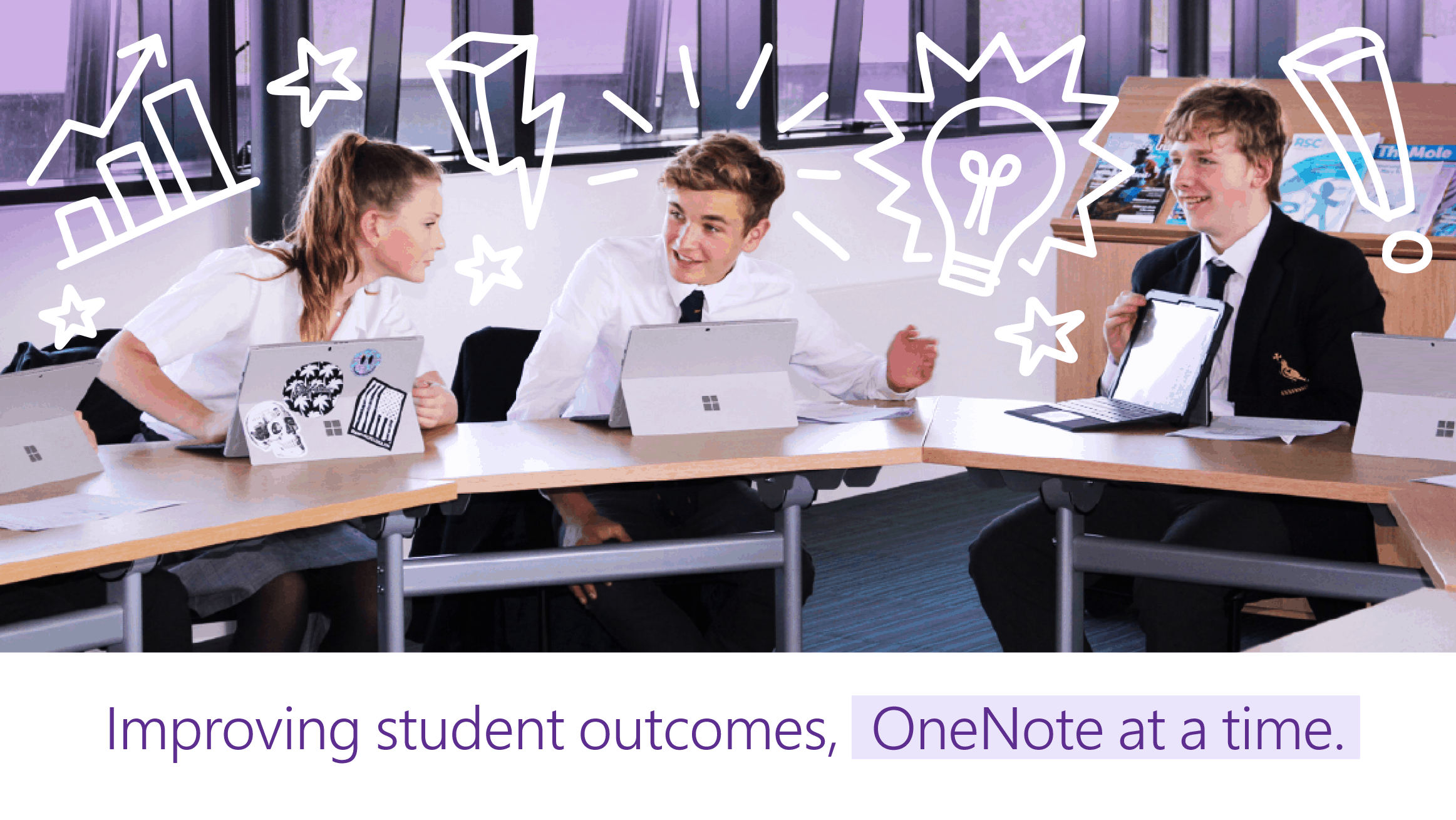OneNote Class Notebooks—and the teaching and learning style they facilitate—have led to significant improvements in attitude and outcomes for my students.
I teach English Language and Literature to 13- to 18-year-olds of mixed ability at an independent boarding school in the U.K. Over the last three years, OneNote has become the central plank of teaching and learning in my classes. As my classes and I head toward a fourth year, I’m blown away by the outcomes.
What I can say with confidence is that the most significant change facilitated by OneNote in my classroom has been pupil ownership of the material. I am able to work with each learner to shape their learning because I have the time to do so. With OneNote, we all waste less time.
Through the Class Notebooks, engaging multimedia resources are quickly created and distributed to students, and I can monitor their progress on tasks, add feedback and offer new content to help them deepen their understanding. Collaboration is much easier to facilitate, too. All this and the blessed extinction of the dreaded trip to the photocopier.

Naturally, there were false starts as we got up and running, but I found the classes to be very patient as we all learned together.
I started small in the first year. I had two ‘Lower Sixth’ (UK Y12, A Level) classes, and I used OneNote to mentor them through their assignments—2000-word essays requiring significant research and critical skill. I curated a range of critical and contextual materials for the classes and prepared collaborative tasks to help them find their own voice.
Typically, pupils at our school are given a choice of two or three pre-written titles for these essays. I wanted to see if my new tactics would give them the confidence to create their own. And they did just that—every single pupil wrote their own title. I was then able to help them identify what their particular essay required because, through Class Notebook, I could see their work developing and guide it organically as they worked through the material at their own pace. The marks for these projects were among the highest in the cohort and had an obvious positive impact on the students’ confidence going into their second year of study.
We felt we had found a tool with great potential to improve both the attitude and approach of the students. Could this method lead to ‘hard’ outcomes as well as so-called ‘soft’ ones?
Recognizing the boost in my student’s confidence led me to ask myself: What if as well as more ownership of the task and outcome, the classes had more ownership of the content generated?
In the second year of my OneNote experiment, I was given a ‘top set’ Year 11 (second year of GCSE)—a high-ability group with whom I could afford even more latitude to experiment with ‘flipped’ learning styles in preparing them for their Literature GCSE exam. I began to do less curating of material in the Content Library and started to ask them to generate their own resources. I scaffolded annotation tasks in the Collaboration Space and had them collaborate on PowerPoint or Word docs (shared from OneDrive). They would then copy and paste them into the Content Library pages, which effectively gave the students a repository of shared research and note-taking experience.
I spent less time talking from the front and more time having focused conversations with individuals as they developed their understanding.
By the end of the course, the vast majority of the material that the students were revising was truly theirs. They knew where it had come from, remembered the process of knowledge construction and could work more confidently with the material as a result.

After my students’ impressive results in their CEM Midyis baseline testing, my Head of Department wrote in my appraisal, “the literature results are the best ever, with all but one out of 24 candidates achieving the highest grade. This must be a record!”
So what would that mean to year three of the OneNote experiment? With the huge successes in the first two years, I was confident in the process and knew the ownership OneNote afforded my students over their work was key.
With my new class of GCSE students, I saw no reason why this principle of generating content collaboratively would not be of similar benefit. Ultimately, I was delighted to see this class respond so positively to it, too.


To see the level of confidence, engagement and determination so high in a class that used to seriously lack confidence in English is immensely rewarding. As one parent told me this term, “she really struggled with English the last few years, but she finds it so much better now that she’s learning in this new way—she’s got her mojo back!”
In my English classes, OneNote has reinvigorated teaching and learning. More importantly, it has allowed me to put the learners at the center of the knowledge construction. In our classes, it feels like we’re preparing for a shared outcome, rather than me as teacher placing them on educational rails and pushing them along to a conclusion. Those outcomes are improving, I am quite sure, because the learning process has improved. That learning process has been enabled by OneNote, and we love it!
James Wilton, Repton School, England




